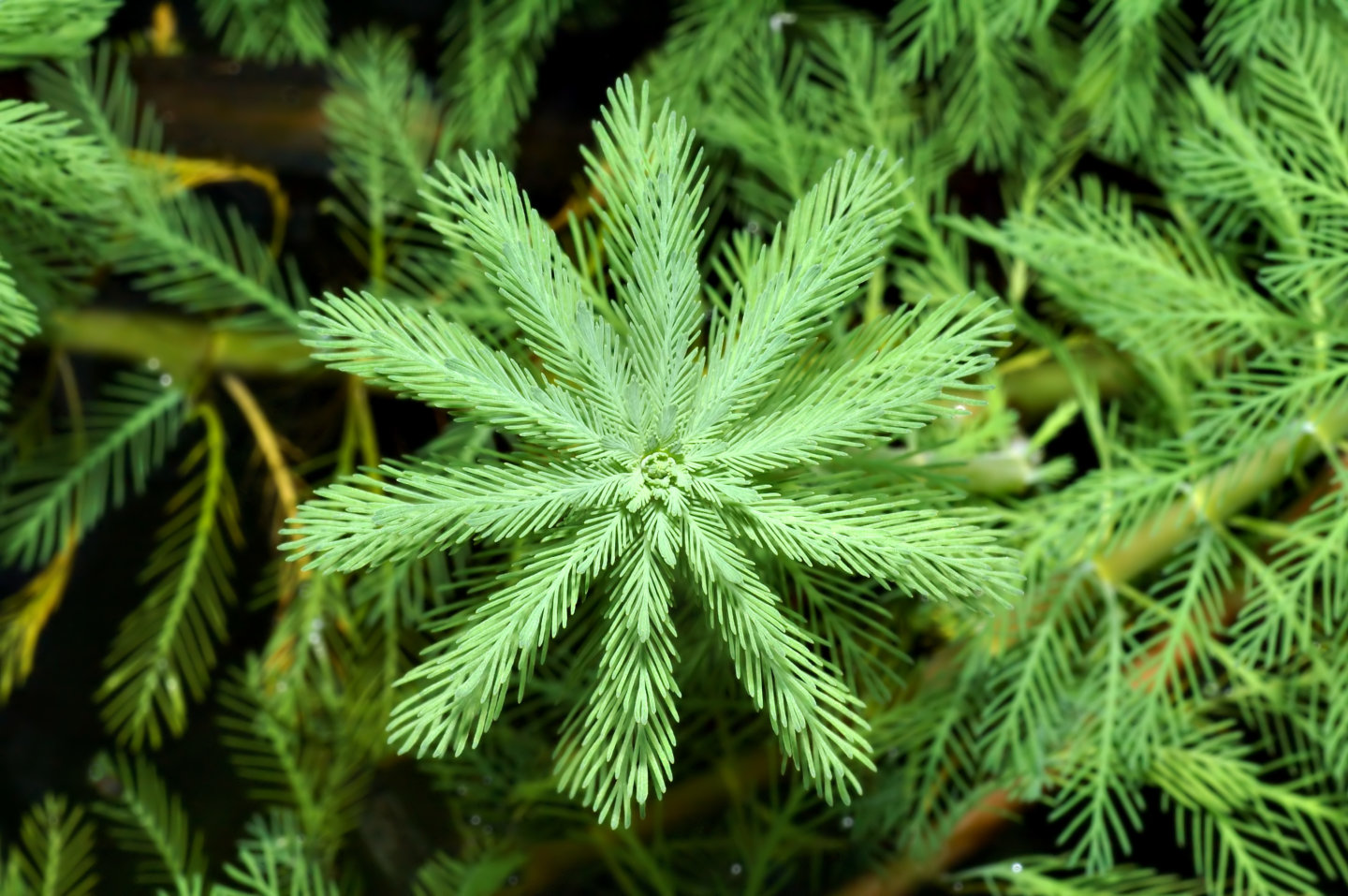Myriophyllum aquaticum
Description
- Native to South America
- Aquatic plant with emergent and submerged plant parts
- Looks like tiny bright green fir trees growing on the water
- Stiff, feather-like foliage (can extend up to 30 cm above the water’s surface)
- Leaflets arranged in whorls of 4–6 around the stem
- Spreads readily through fragmentation of the stems and rhizomes
- Popular/common aquarium plant
Consequences of invasion
- Forms dense mats of vegetation that can entirely cover the surface of the water
- Impedes boating, swimming, and fishing
- Provides ideal habitat for mosquito larvae
- Outcompetes native aquatic vegetation
- Impacts waterways, irrigation ditches, and drainage canals, where it has the potential to inhibit flow and increase maintenance costs
- Alters water chemistry which can negatively affect juvenile salmon
Status in the CKISS region
- Parrot feather milfoil is currently classified as Prevent on the CKISS Annual Priority List.
- It is not known to occur in the CKISS region.
- Please report any findings of this species immediately.
- To learn more about how CKISS classifies and manages invasive species, see our Invasive Species Priority Lists page.
Integrated pest management options
- Never discard aquarium contents into water bodies
- Purchase alternative, non-invasive aquatic plants for aquariums and aquatic gardens
- Remove any plant material from boats, anchors, trailers, fishing gear and other equipment before leaving the water body
- Because this plant spreads readily through fragmentation, mechanical controls such as cutting and harvesting are not recommended

